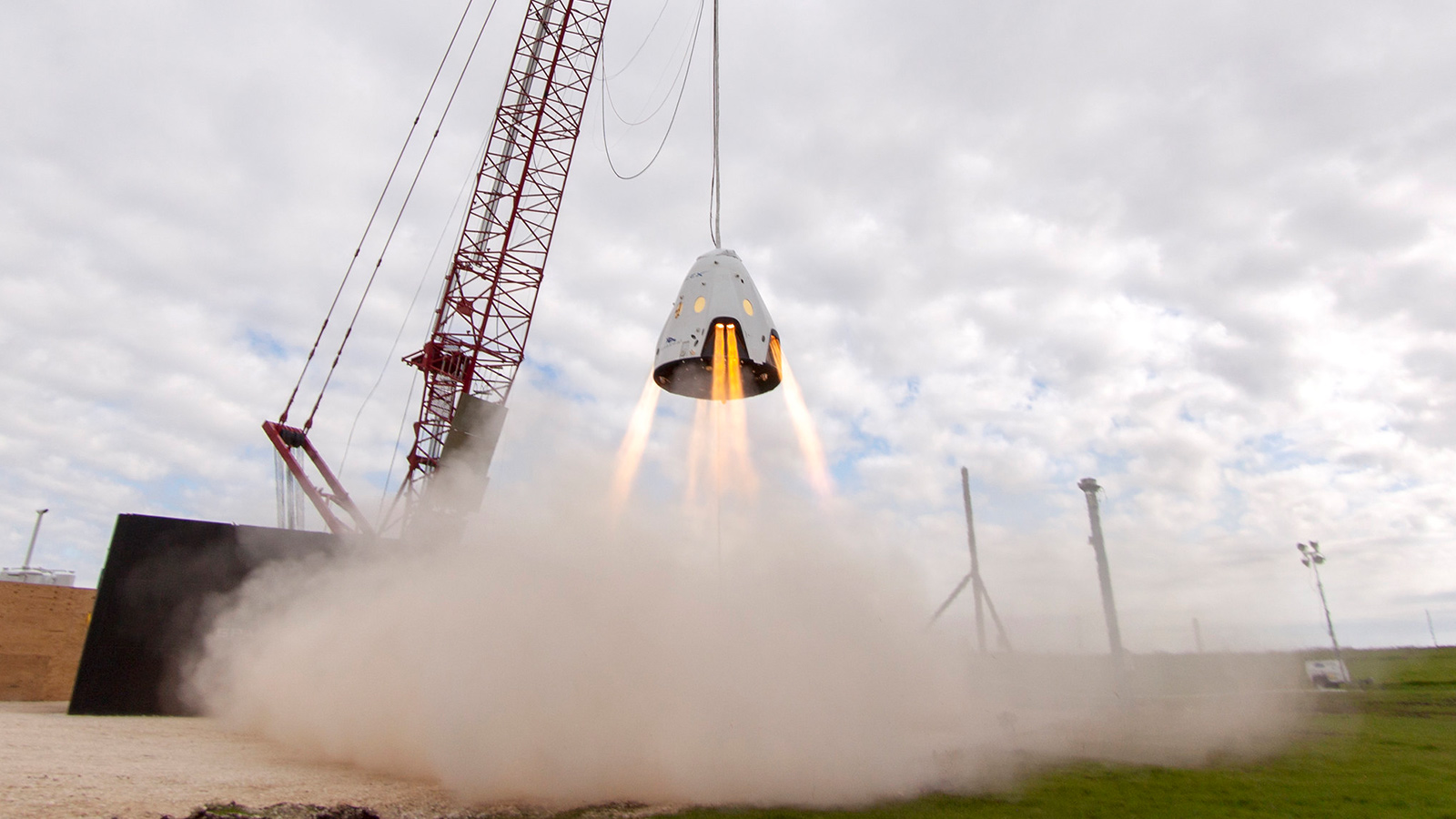Stay Up to Date
Submit your email address to receive the latest industry and Aerospace America news.
For those on the outside, there are still a lot of unknowns about the SpaceX accident involving one of the company’s Crew Dragon capsules, and it’s likely to stay that way for some time.
So far, NASA and SpaceX have described the incident at Cape Canaveral, Florida, only as an “anomaly” that occurred during tests of the Dragon’s SuperDraco abort engines, made to push the capsule away if a rocket fails during launch. The cargo version of Dragon does not have these abort engines because it does not carry crew.
A NASA spokeswoman said by email Tuesday that the agency is “participating in and supporting the SpaceX-led mishap investigation.”
How long will this investigation take? “This is not going to be a couple-of-weeks thing,” predicted Ray Lugo, director of the Florida Space Institute at the University of Central Florida. “I think easily it could be a couple of months.”
NASA had been counting on SpaceX, one of its two Commercial Crew contractors, to get it back in the business of launching astronauts to orbit from American soil, albeit this time on commercially owned spaceships. Boeing, the other contractor, is late and won’t launch its first orbital test flight until August.
The incident occurred April 20 at Landing Zone 1, the outdoor facility at Cape Canaveral where Falcon rocket stages land. SpaceX released a statement saying initial tests of the engines were “completed successfully but the final test resulted in an anomaly on the test stand.” Neither SpaceX nor NASA have described the condition of the Crew Dragon, one of six in various stages of production.
Images and video on social media show orange clouds rising from Landing Zone 1 that could indicate a leak of hypergolic fuel, meaning a fuel that spontaneously ignites when mixed with an oxidizer. The SuperDraco thrusters mix nitrogen tetroxide oxidizer with hydrazine fuel to generate thrust. Lugo said the orange clouds could be from nitrogen tetroxide, which turns orange and vaporizes when it’s exposed to the air. “That doesn’t necessarily mean there was an explosion, but it definitely means something wasn’t right,” he said.
With no word from SpaceX since its Saturday statement, some theorize that the capsule was damaged or destroyed.
“When you have a hypergolic leak and the oxidizer and the fuel meet each other, you have a strong chemical reaction with release of energy,” another expert said. “So there’s at least going to be fire damage. A leak is too mild a statement. A leak may have been the trigger, but it looked like a more violent event.”
Lugo said the investigation will almost certainly cause a “significant delay” in SpaceX’s efforts to send crew to the International Space Station for NASA. The Crew Dragon completed an unoccupied test docking to the ISS last month, and NASA says it is moving forward with an April 30 launch of a cargo version of the spacecraft.
About cat hofacker
Cat helps guide our coverage and keeps production of the print magazine on schedule. She became associate editor in 2021 after two years as our staff reporter. Cat joined us in 2019 after covering the 2018 congressional midterm elections as an intern for USA Today.
Related Posts
Stay Up to Date
Submit your email address to receive the latest industry and Aerospace America news.




